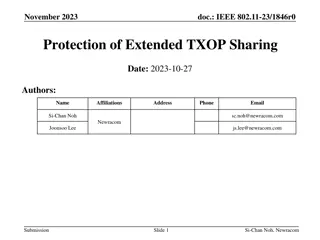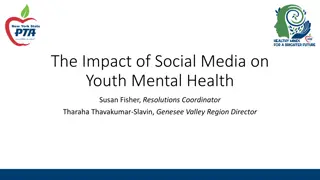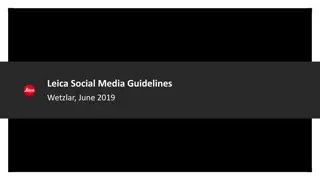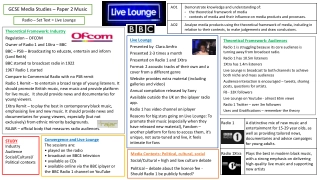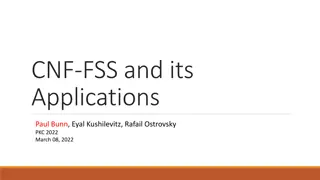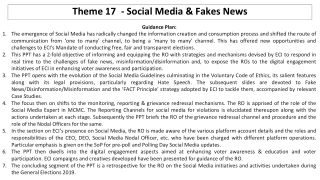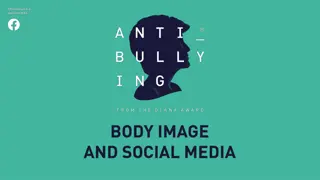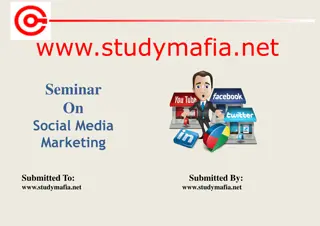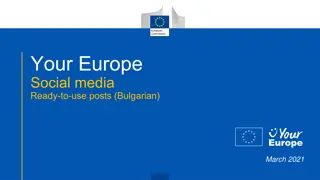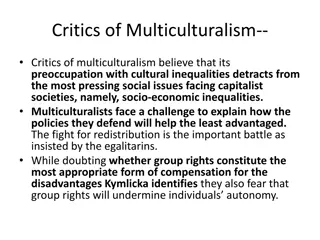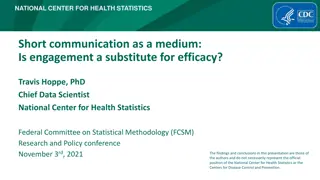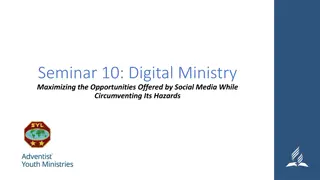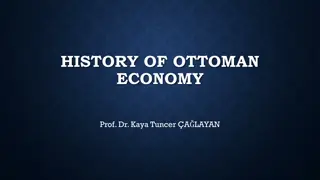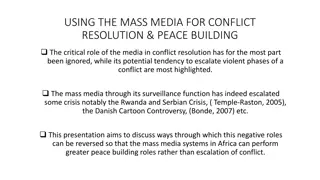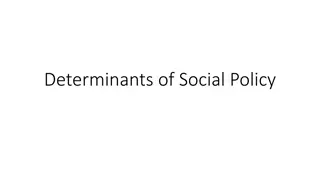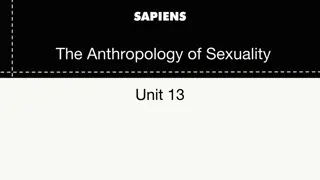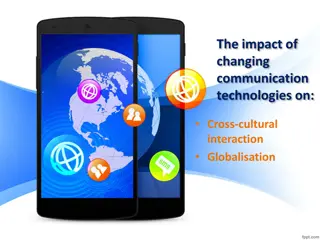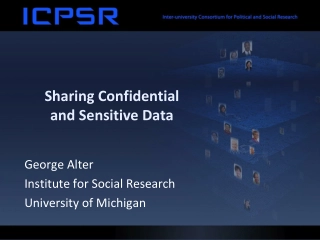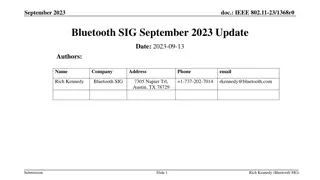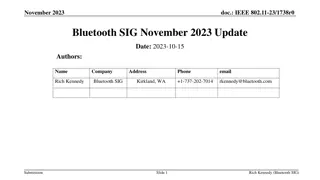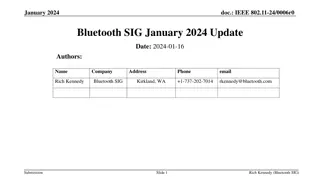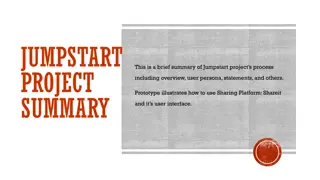Cultural Influences on Timing of Social Media Sharing
This research investigates the influences that affect when one shares an event on social media, focusing on the role of cultural factors, regulatory focus, and self-construal. The study aims to understand how different cultures impact the timing of sharing information on social media platforms.
- cultural influences
- social media sharing
- timing
- regulatory focus
- self-construal
- cultural frameworks
- individualism
- collectivism
Download Presentation

Please find below an Image/Link to download the presentation.
The content on the website is provided AS IS for your information and personal use only. It may not be sold, licensed, or shared on other websites without obtaining consent from the author. Download presentation by click this link. If you encounter any issues during the download, it is possible that the publisher has removed the file from their server.
E N D
Presentation Transcript
Team Regulatory Foci - Investigating the influences that affect when one shares on social media. Patrick Ogaz, Andrea Escobar Vara, Claire Son & Sebastian Hernandez Advisor: Dr. Jae Min Jung
Outline Research Motivation Literature Review Social Media Sharing Function Culture Cultures influence on the sharing function Regulatory Focus Self Construal Culture s Impact on Timing of Sharing Hypothesis Methodology Study Design Data Collection Data Analysis Hypothesis 1 Hypothesis 2 2
Research Motivation In the U.S., Twitter users often post their own countdowns to an upcoming event, making pre-posting a popular tool for marketers (Jung et al. Forthcoming). Previous studies have found that culture affects the manner in which individuals share information (e.g., aspirations, personal data, etc.) within society (Hofstede 2001). According to an analysis of event marketing campaigns on Bufferapp.com, there were nearly as many posts leading up to an event (40% of total posts) as there were during the event itself (42% of total posts) in the U.S. and Europe. However, little is known about how culture affects when consumers share an event on social media (Timing of Sharing). 3
Research Objectives 1. To investigate how self-construal influences consumers timing (before vs. after) of sharing information about an event on social media. 2. To investigate the role that regulatory foci plays in explaining how self-construal influences the afore-mentioned sharing behaviors. 4
Culture 5
Hofstedes Cultural Framework (Hofstede, 2001) Individualism vs. collectivism (INDCOL) is the dimension used the most widely in social science research because it explains people s cultural differences the most. Individual interest prevails over collective interests European countries, US, Canada, Australia Collective interest prevails over individual interest The rest of the world (e.g., Asian, South American, Africa) 6
Individualism vs Collectivism (Hofstede, 2001) Individualism Collectivism Use of the word I is encouraged Independent self More extravert Showing happiness is encouraged, and sadness discouraged Consumption patterns show self-supporting lifestyles Use of the word I is avoided Interdependent self More introvert Showing sadness is encouraged, and happiness is discouraged Consumption patterns show dependence on others 7
Self-Construal Self-construal refers to how individuals define and make meaning of the self (Cross, et al., 2011). Independent Self-construal Interdependent Self-construal 9 (Markus and Kitayama, 1991)
Independent Self-Construal Society as a medium to promote the well-being of the individual. American and Western European cultures Ideals of self-actualization and developing one s distinct potential are prominent (Markus and Kitayama, 1991). Characterized by autonomy and achievement (Heine et al., 1999). 10 (Lee et al., 2000)
Interdependent Self-Construal Prioritize social relationships (Markus and Kitayama, 1991). Asian, Latin-American, African, and many southern European cultures (Markus and Kitayama, 1991). Characterized: belonging, fulfilling obligations and responsibilities to others (Heine et al., 1999) . 11 (Lee et al., 2000)
Regularly Focus Theory (Higgins, 1997) Regulatory focus is a theory of self-regulation that proposes two distinct foci. Promotion focus that is primarily concerned with maximizing positive outcomes. Prevention focus that is primarily concerned with minimizing negative outcomes. 13
Regularly Focus Theory (Higgins, 1997) Promotion Prevention Emphasizes hopes, accomplishments, and advancements Views goals as gains Prefers an eager goal-pursuit strategy Failure to achieve strong ideals leads to depressive emotions Emphasizes safety, responsibility, and security Views goals as duties Prefers a vigilant goal-pursuit strategy Failure to achieve actuals oughts leads to anxious emotions 14
The Relationship between Culture, Regulatory Foci and Self-Construal 15
Collective cultures fosters Prevention-oriented motivation (Eastern countries). Individualistic cultures fosters Promotion-oriented motivation (Western countries). Individualistic Culture Collective Culture Independent Independent Self Self- -Construal Construal Interdependent Interdependent Self Self- -Construal Construal 16 (Markus & Kitayama, 1991; Triandis, 1989)
Why we believe that sharing will differ 17
Different perspectives regarding the future People in promotion orientation (independent self-construal) view their future more favorably, whereas prevention (interdependent self-construal) focused individuals did not compare themselves to their future self as much (Corcoran and Peetz, 2014). By viewing the future more positively than today, it creates the feeling of excitement (over dread or ambivalence).
Hypothesis 1 Timing of Sharing on Social Media H1: Consumers with an independent self-construal will share the anticipation of events before the events occur, whereas consumers with an interdependent-self construal will share the retrospection of events on social media at a higher rate after the events end. Before After Individualistic / promotion-oriented e.g. U.S. the U.S. Independent More prevalent in Collectivistic / prevention-oriented e.g. South Korea South Korea Interdependent More prevalent in Event 19
Hypothesis 2 Mediating Role of Regulatory Foci H2: The impact of self-construal on the timing of sharing will be mediated (determined) by regulatory foci. Regulatory Foci (Promotion Orientation) Prevention Orientation) Self Construal (Independent or Interdependent) Timing of sharing H1a 20
Expected Contributions Through our research marketers can better understand why their pre-launch/pre-event marketing efforts can be more effective in certain countries (IND) in comparison to others (COL). The study can help practitioners better understand the behavior of Collective cultures that underline their affinity to share information after an event. Given this information companies should perform/conduct (if not already a standard practice) a deeper analysis/data collection within COL cultures. The collected information should provide insights of what features/key elements of the event/marketing campaign align with these consumers. 21
Methodology 22
Methodology - Study Design Experiment Randomly Assigned Stimulus Self-construal Priming Scenario - influence participants to think from a certain viewpoint One factor design N = 150 Timing of Sharing Scenario Self-construals Before/After the event* Interdependent * Independent *** *Dependent variable
Methodology - Study Design (Cont.) 1. Screener Questions Arousal Questions Measuring Timing of Sharing (DV) 2. 6. Arousal Questions 7. Self-construal Priming 3. Chronic Regulatory Focus Manipulation Check 4. 8. 9. Confounding Check Timing of Sharing Scenario 5. 10. Demographics 24
Survey Panel Utilization of Amazon Mechanical Turk (MTURK) to recruit respondents. Used CloudResearch Mturk toolkit. Helped us collect higher quality respondents and slow down data collection to get a more holistic and representative sample. We had a total of 5 batches of 30 people (dates 1-11 thru 3-/16) 25
Analysis 26
Data Preparation/Pre-analysis Excluded noticeable outliers Filtered respondents by those who spent at least 6 minutes and no more than 30 minutes Did not include responses that were not serious Created new variables to aid analysis Recoded necessary items Dummy coding of self construal groups Checked all the scales we used had a sufficient reliability score All adopted/adapted from previous literature One scale showed to be unreliable Prevention scale 27
Hypothesis Test 1 Table 1. Timing of Sharing (Before/After) M SD Self-Construal Independent 4.08 2.04 N = 56 N = 52 Interdependent 5.41 2.38 t(106)= 3.14, P>.005 28 Note: All of our results are not yet verified since we are still working on our manipulation check
Hypothesis Test 2 Ran well known mediation analysis from Baron and Kenny (1968) Used dummy coding for self-construal (SC) groups (Independent = 0) (Interdependent =1) Our results do not support our 2nd hypothesis 29 Note: All of our results are not yet verified since we are still working on our manipulation check
What needs to be done Manipulation check Need to code open end responses for content analysis Write out the results from our analysis Complete our manuscript 30
Appendix a. Table 1. Timing of Sharing (Before/After) M SD Self-Construal Independent 4.08 2.04 Independent 5.41 2.38 31
Appendix b. 32
Acknowledgements Advisor Dr. Jae Min Jung Cal Poly Pomona Office of Undergraduate Research Learn Through Discovery Projects Hatchery Program Center for Customer Insights and Digital Marketing 33
Bibliography Aaker, Jennifer L. and Angela Y. Lee (2001), "I Seek Pleasures, We Avoid Pains: The Role of Self Regulatory Goals in Information Processing and Persuasion," Journal of Consumer Research, 28 (1), 33-49. Aaker, Jennifer L. and Patti Williams (1998), Empathy Versus Pride - The Influence of Emotional Appeals Across Cultures, Journal of Consumer Research, 25 (1), 241 -261. Berger, Jonah. (2011), Arousal Increases Social Transmission of Information, Psychological science, Vol. 22, 891-3. Chan, Eugene Y. and Najam U. Saqib (2021), How Long Has It Been-Self-Construal and Subjective Time Perception, Personality and Social Psychology Bulletin, 1-14. Corcoran, Katja and Johanna Peetz (2014), Looking Towards the Past or the Future Self: How Regulatory Focus Affects Temporal Comparisons and Subsequent Motivation, Self and Identity, 13 (1), 81-99. Cross SE, Hardin EE, Gercek-Swing B (2011), The What, How, Why, and Where of Self-construal, Personality and Social Psychology Review, 15, 142 79. Heine, Steven J., Hazel R. Markus, Darrin R. Lehman, and Shinobu Kitayama (1999), Is There a Universal Need for Positive Self-Regard?, Psychological Review, Vol. 106 (4), 766-794. Higgins, Edward Tory (1997), Beyond Pleasure and Pain, American Psychologist, 52, 1280 -1300. Hofstede, Geert H. (2001), Culture s Consequences: Comparing Values, Behaviors, Institutions, and Organizations across Nations, Thousand Oaks, CA: Sage Publication. Jackson, Linda A., and Jin-Liang Wang (2013), Cultural Differences in Social Networking Site Use: A Comparative Study of China and the United States, Computers in Human Behavior, 29 (3), 910-921. 34 Continues on the next page.
Bibliography (contd) Jung, Jae Min, Kyeong Sam Min, Kristen R. Schiele, Anthony Kim, Jing Hu, Xin Liu, Curtis P. Haugtvedt, and James J. Kellaris (Forthcoming), Cross-Cultural Differences in Social Media Use: Implications for International Social Media Marketing Strategy, in Handbook of Digital Marketing and Social Media, Annmarie Hanlon and Tracy Tuten, eds. SAGE. Kietzmann, Jan H., Kristopher Hermkens, Ian P. McCarthy, and Bruno S. Silvestre (2011), Social Media? Get Serious! Understanding the Functional Building Blocks of Social Media, Business Horizon, 54 (3), 241-251. Lee, A. Y., Aaker, J. L., and Gardner, W. L. (2000), The Pleasures and Pains of Distinct Self-construals: The Role of Interdependence in Regulatory Focus, Journal of Personality and Social Psychology,J 78(6), 1122-1134. Lim, Nangyeon (2016). Cultural Differences in Emotion: Differences in Emotional Arousal Level Between the East and the West, Integrative Medicine Research, 5 (2), 105-109. Markus, H., and Shinobu Kitayama (1991), Culture and the Self: Implications for Cognition, Emotion and Involvement, Psychological Review, 98, 224-253. Russell, J. A. (2003), Core Affect and the Psychological Construction of Emotion, Psychological Review, 110 (1), 145 172. Triandis, H. C. (1989). The Self and Behavior in Differing Cultural Contexts, Psychological Review, 96, 506 520. Tsai J.L. (2007), Ideal Affect: Cultural Causes and Behavioral Consequences, Perspectives on Psychological Science, Vol. 2(3), 242 59. Weingarten, Evan, and Jonah Berger (2017), Fired Up for the Future: How Time Shapes Sharing, Journal of Consumer Research, 44, 432- 447. 35
Thank You! Q&A 36



